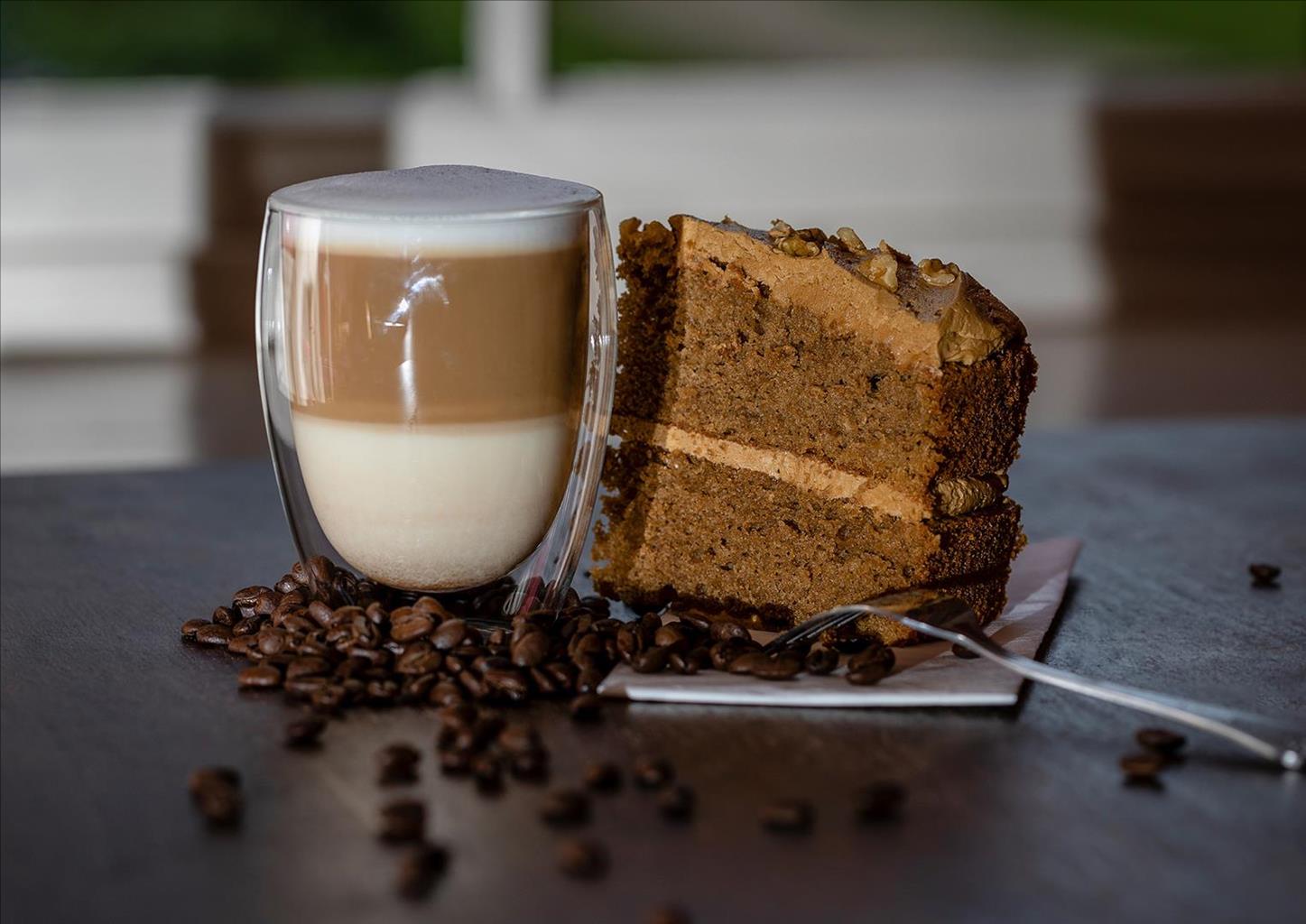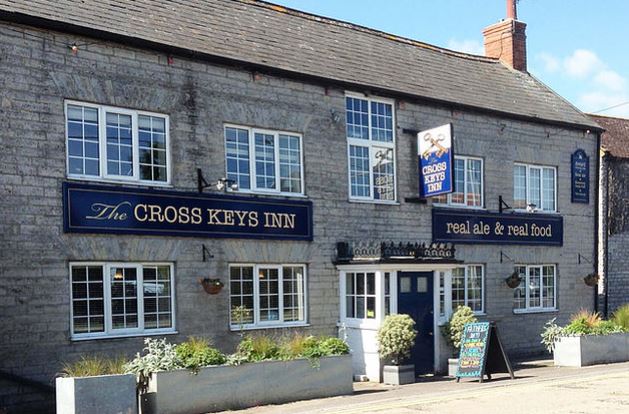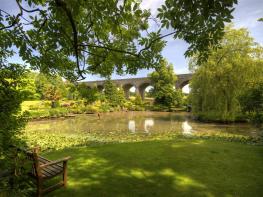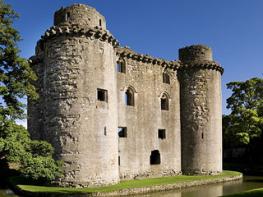Awaiting description.
Bruton Combes

A walk around and above beautiful Bruton, a typical Somerset town, built in the early wealth of the wool industry.
4.5 miles (7.2kms)
About the walk
Bruton is a typical Somerset town: originally Saxon but made prosperous by monks in the Middle Ages. The Augustinians moved in around 1150 and soon upgraded from priory to abbey. In the 10th century Bruton was the county's seventh largest town – though this was achieved with a tax-paying population of just 85!
In the Middle Ages England was a one-product economy. The basic unit of wealth was the 346lb (157kg) woolsack. In 1310 some 35,000 of these were exported; in 1421, 75 per cent of all customs duties were paid on wool. In Parliament at London, the Lord Chancellor sat on a woolsack as a constant reminder of where his government's money came from. (Today it has been replaced by a wool-stuffed chair.) As the price of raw wool started to fall, England turned to the manufacture of cloth, adding value to the product before it left the country. Bruton was ahead of the game here. Back in 1240 the town built its first fulling mill, sited on Quaperlake Street. Here the cloth was washed with fullers' earth, a form of clay that acts as a natural de-greasing compound. (Fuller's earth absorbs water as well as grease; it is responsible for the peculiarly sticky mud encountered on the climb out of Combe Hay) The washed wool was then felted with water-powered hammers.
The raw wool market had been dominated by trading barons, who frequently became real aristocratic barons as a result. But the cloth trade saw, and to a great extent caused, the rise of the English middle class of clothiers and merchants. Their wool wealth rebuilt the church and a century later added its unusual second tower; they built the High Street and endowed the almshouses. Bruton clothiers traded with merchants in Hampshire, Dorset and London, and exported through the ports of Dorset. In the 1540s Bruton's fullers were importing woad (for dyeing) from the far Azores by way of Bristol. The Abbey saw its interests as parallel with those of the town, and subsidised the market cross and the licensing of fairs.
Mechanisation of the spinning and weaving processes was getting under way in the 1820s, but depression set in the 1830s and Somerset never caught up with Lancashire. Hence Somerset wool villages remain non-industrial and pretty. Many medieval buildings survive behind the (fairly) modern shop signs and under the paintwork. Where others have collapsed through the ages, replacements have been inserted in the style of every century but always with sympathy. Today, competition from synthetic materials means the price of a fleece barely pays the wages of the shearer. In Bruton you'll see the evidence of wool wealth on every side, but few sheep.
Walk directions
With the church on your left and the bridge on your right, head down Silver Street for 30yds (27m) to a small car park in Coombe Street. The old packhorse bridge over the River Brue leads into Lower Backway. Turn left for 350yds (320m), then take a path between railed fences to a footbridge. Turn right along the river to A359.
Turn right over Leggs Bridge and right again into the end of High Street, but at once turn off uphill on to a walled path called Mill Dam. The path becomes a narrow lane; in 150yds (140m) turn left along byway track signed to Creech Hill Lane. Just after a footbridge fork left: the hedged path is fairly steep and muddy. At the top of the combe it becomes a farm track. This bends left (the short-cut track on the right isn't a right of way) and reaches a road.
Turn right for a few steps, then right again (marked Wyke Road), and after 220yds (200m) turn right past farm buildings to an uphill track, Creech Hill Lane. This becomes a hedged tunnel, then emerges at Creech Hill Farm. Once past the cupressus hedge that hides the slurry pit, you'll have a fine view over Bruton. Pass along the front of the farm and out to the B3081.
Head up the road to the first field gate opposite, with bridleway signpost. Turn sharp right to pass below a hedge. The small path follows the rim of the combe hollow. Opposite Green's Combe Farm, slant down left to just below a stream junction – strips of trees mark the streams. Cross the stream and bear left to a gate on to the farm's driveway track.
Turn right, away from the farm, for 220yds (200m) until the track bends right. Here keep ahead through a field gate with a waymarker, onto a green track. After 200yds (183m), at the foot of a former hedge, turn downhill, to the left of a row of hazels, to a gate. Pass through a small wood to a gate and track. When this emerges into open field keep ahead, below a fence, to join the B3081. Turn left, uphill, to the entrance to Coombe Farm.
Ignoring a stile on the left, go down the driveway for barely a dozen paces before turning off left, and at once forking left again on to a wide path under sycamore trees. The path rises gently, with a bank on its left. On reaching a clearing, keep to the left edge to find a descending path that becomes St Catherine's Hill. Weavers' cottages are on the right as the street descends steeply into Bruton. Turn left along the High Street. At its end turn right down Patwell Street to Church Bridge.
Additional information
Enclosed tracks, open fields
Steep, grassy hills and combes
On lead or under close control
OS Explorer 142 Shepton Mallet
Free parking off Silver Street, 50yds (46m) west of church; larger car park in Upper Backway
Near Church Bridge (walk start) and signposted from there
WALKING IN SAFETY
Read our tips to look after yourself and the environment when following this walk.
Find out more
Also in the area
About the area
Discover Somerset
Somerset means ‘summer pastures’ – appropriate given that so much of this county remains rural and unspoiled. Ever popular areas to visit are the limestone and red sandstone Mendip Hills rising to over 1,000 feet, and by complete contrast, to the south and southwest, the flat landscape of the Somerset Levels. Descend to the Somerset Levels, an evocative lowland landscape that was the setting for the Battle of Sedgemoor in 1685. In the depths of winter this is a desolate place and famously prone to extensive flooding. There is also a palpable sense of the distant past among these fields and scattered communities. It is claimed that Alfred the Great retreated here after his defeat by the Danes.
Away from the flat country are the Quantocks, once the haunt of poets Samuel Taylor Coleridge and William Wordsworth. The Quantocks are noted for their gentle slopes, heather-covered moorland expanses and red deer. From the summit, the Bristol Channel is visible where it meets the Severn Estuary. So much of this hilly landscape has a timeless quality about it and large areas have hardly changed since Coleridge and Wordsworth’s day.
Nearby stays
Restaurants and Pubs
Nearby experiences
Recommended things to do
Why choose Rated Trips?
Your trusted guide to rated places across the UK
The best coverage
Discover more than 15,000 professionally rated places to stay, eat and visit from across the UK and Ireland.
Quality assured
Choose a place to stay safe in the knowledge that it has been expertly assessed by trained assessors.
Plan your next trip
Search by location or the type of place you're visiting to find your next ideal holiday experience.
Travel inspiration
Read our articles, city guides and recommended things to do for inspiration. We're here to help you explore the UK.













